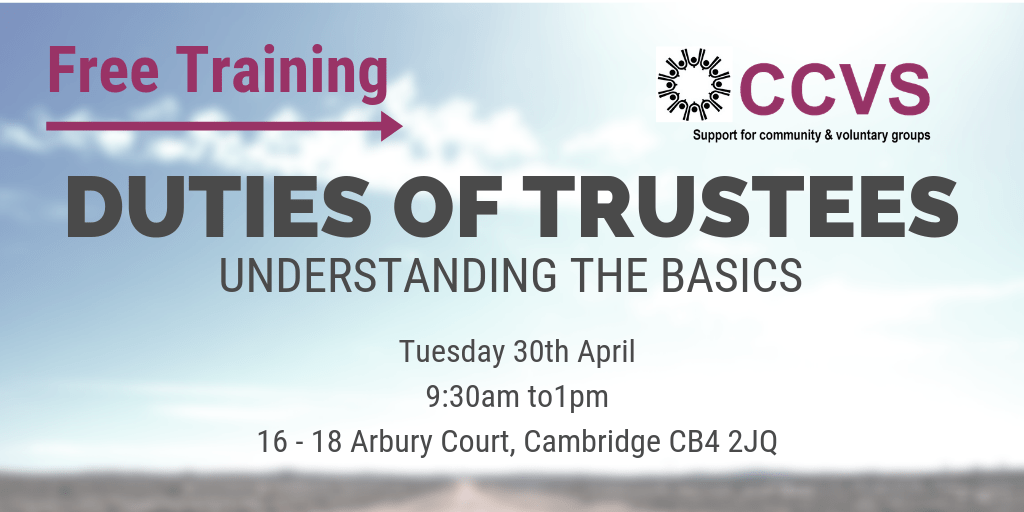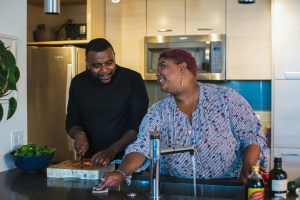By Mark Freeman CEO at CCVS and research author.
This blog builds on the Support Cambridgeshire State of the sector research that can be found here https://supportcambridgeshire.org.uk/news/state-sector-survey/
There is a great deal of information in the report, and we hope that people find it useful and interesting. Using the findings, and what we know about everything else that is happening, these are the things that I think we need to make some noise about. I want to shout about the good and the bad and look at what we need to do moving forwards.
Is crisis here to stay?
The subtitle of the report is ‘The state of the voluntary sector in the midst of a cost-of-living crisis.’ Just when we thought that the end of the pandemic would bring a time to take a breath, rebuild reserves of energy, money and enthusiasm, and take stock of the positives as well as the negatives that the pandemic had highlighted, we found there was no respite as we careered headlong into a different but equally damaging crisis.
People are tired and organisations are in a constant crisis mode. The levels of optimism have dropped from last year with only 43% of respondents thinking that next year will be better than last year (compared to 59% saying so in 2022). We have to recognise the impact this has on staff and volunteers and ensure that organisations prioritise their wellbeing as well as they do the wellbeing of those they work with.
We are seeing the impact of big social, political, and environmental issues on local groups and the people and communities they work with. These big issues are reflected in the survey results with more people concerned about climate change, divisions in society, uncertain economic outlook and changes in local politics than they were last year. Locally groups can do little to impact these issues but the fallout from them is impacting people in very real ways and is often adding to the work of groups.
We have to make more noise about what impact national policies are having locally on organisations and the people they work with. We need to get better at articulating the stories that organisations hear so that the impact of decisions nationally can be seen in the context of how they impact real people and communities. Collectively the sector can help to ensure that any impact is mitigated locally by helping to influence local statutory partners and Support Cambridgeshire will continue to advocate for the local sector where it can, to do this we need your stories and your knowledge of what is happening so please share with us.
Positivity remains.
I still see positivity from groups and those working and volunteering in them. I see groups continuing to deliver and looking at how they adapt and develop in order keep delivering. One respondent wrote,
“We have lots of opportunities and exciting projects coming up. 2022 allowed us to build up a lot of new connections and strong relationships, which are likely to result in additional funding this year.”
The pandemic allowed new relationships to form, it allowed groups to learn new ways of working and it provided opportunities for innovation. Across the sector we are seeing groups taking the best of the last two years and building that into their work moving forward. Groups are looking to Support Cambridgeshire and other organisations to build the skills and knowledge needed to keep moving forward. We are seeing a demand for more networking opportunities and a real desire to find ways to build on relationships that were formed over the pandemic.
We know it is hard for many to find the time to attend training or events and it is up to us to find ways to make this work. We need to look at both online and in person events but also how we use technology to help people keep in touch. There is a clear preference from the survey for online, but we know how beneficial groups find being together in the same room. We will find ways that recognise solutions may vary so that people can find what works for them. We will also work with our statutory partners to stop them slipping back into the old ways and to ensure they remain actively engaged as equal partners and not as the masters to the sectors servants.
Volunteers are key.
Volunteers are the lifeblood of so much of what happens in the sector. We saw people embrace volunteering in many ways during the pandemic. But we also saw volunteers stopping as roles changed and as people isolated.
Our survey is reflecting the national (and indeed international) data that is showing that many of those who volunteered during the pandemic have not continued, and that those who volunteered before the pandemic, but were forced to stop, have not all returned. This has left the sector struggling to recruit and retain volunteers. The survey shows 73% of organisations having an issue recruiting volunteers, this is up from 69% in 2019.
There is also a change in what volunteers want to commit to as this survey response highlights.
“We can recruit volunteers for one-off events but finding people who are prepared to make a regular commitment (e.g. monthly meetings, decision-making roles) is proving difficult since the pandemic.”
At Support Cambridgeshire we are looking at how we can help attract more people to volunteer and how we can help organisations adapt their volunteering offer to suit the way people want to volunteer. We are developing a county wide volunteer platform that will help organisations and individuals to find one another, and that we hope will act as a catalyst to promoting volunteering. We continue to provide training, support, and networks aimed at volunteer management and engagement, and we will continue to push for local funding to support volunteering programmes.
Money is also key.
The whole process of identifying, getting, managing, and reporting on the funding an organisation needs is exhausting and time consuming. The biggest issue highlighted by the survey is lack of funding with 85% of organisations highlighting this (up from 82% in 2019). When asked about the barriers comments like these were common.
“Securing funding for core costs / unrestricted funds.”
“Competitive tendering processes and short cycles being draining on staff and creating precarious conditions for employment.”
We need to find more money for the work the sector does. Equally importantly we need to push for this money to be available in different ways. We must move away from short term funding that funds a project, to longer term funding that funds the organisation to deliver its mission. Funders should review the monitoring they require, and at the same time organisations need to collect the data and tell their story in a way that gives the funders what they need, allows trustees to govern properly, and that highlights to the public the fantastic work that is happening.
Support Cambridgeshire will continue to work with organisations and the local funders to explore how we can make more money available in a way that reduces the burden on both the funder and the recipient. We need to shift how we fund as well as the amount that is funded. At the same time, we will look at how we can help organisations develop new funding sources and the skills to exploit them. We need to see an end to this type of comment and allow organisations to concentrate less on the money and more on their core purpose.
“Massive barriers with funding – some of the core services we offer aren’t funded by any agency and instead we have to rely on grant funding or fundraising.”
Community is in the ascendence.
There has been a growing recognition of the importance of the sector and the role it plays to help communities and individuals thrive. This has resulted in unprecedented interest in what the sector can offer and how it can help alleviate some of the issues that government at all levels is trying to address. This all means the sectors star is in the ascendence as statutory bodies look towards us and communities to deliver in a radically different way. It remains to be seen if there will be the real will and the resources to make the changes, but we have not been in a place like this with opportunities like these for a long time. As one respondent commented.
“The reputation of our organisation continues to grow. Our residents have more and more confidence in seeking help from us. And we have stronger than ever links other organisations. All of this puts us in a good position to fulfil our aims and objectives.”
Despite this desire to see communities and the organisations embedded in them deliver, the research shows that all is not equal across the county. There are more organisations and more money in some of the traditionally more affluent areas, and this will result in more services and support being available.
At Support Cambridgeshire we will look at how we share this information to raise awareness of the state of the Cambridgeshire VCS. Change and adaptation is essential for the sector and the same is true for us at Support Cambridgeshire, we will look at how we can use this information to improve our work and our offer to all the VCS across the county. We will use the survey to help us advocate for change. Change from statutory partners. Change from funders of all types. Change in how organisations work. Change in how organisations are supported. Change in how the sector is seen and supported by the public.
Conclusion
We hope that this survey helps to build understanding of the charity and community sector in Cambridgeshire. We hope that it shows the variety and size of the sector but also the issues it faces as society battles with the aftermath of the pandemic and the ongoing cost of living crisis.
The sector is amazing, and resilient and innovative, but it needs to be supported and nurtured and not simply taken for granted. At Support Cambridgeshire this is our primary goal, but it is not something that we can do alone so we will be looking for help everywhere we can find it!















